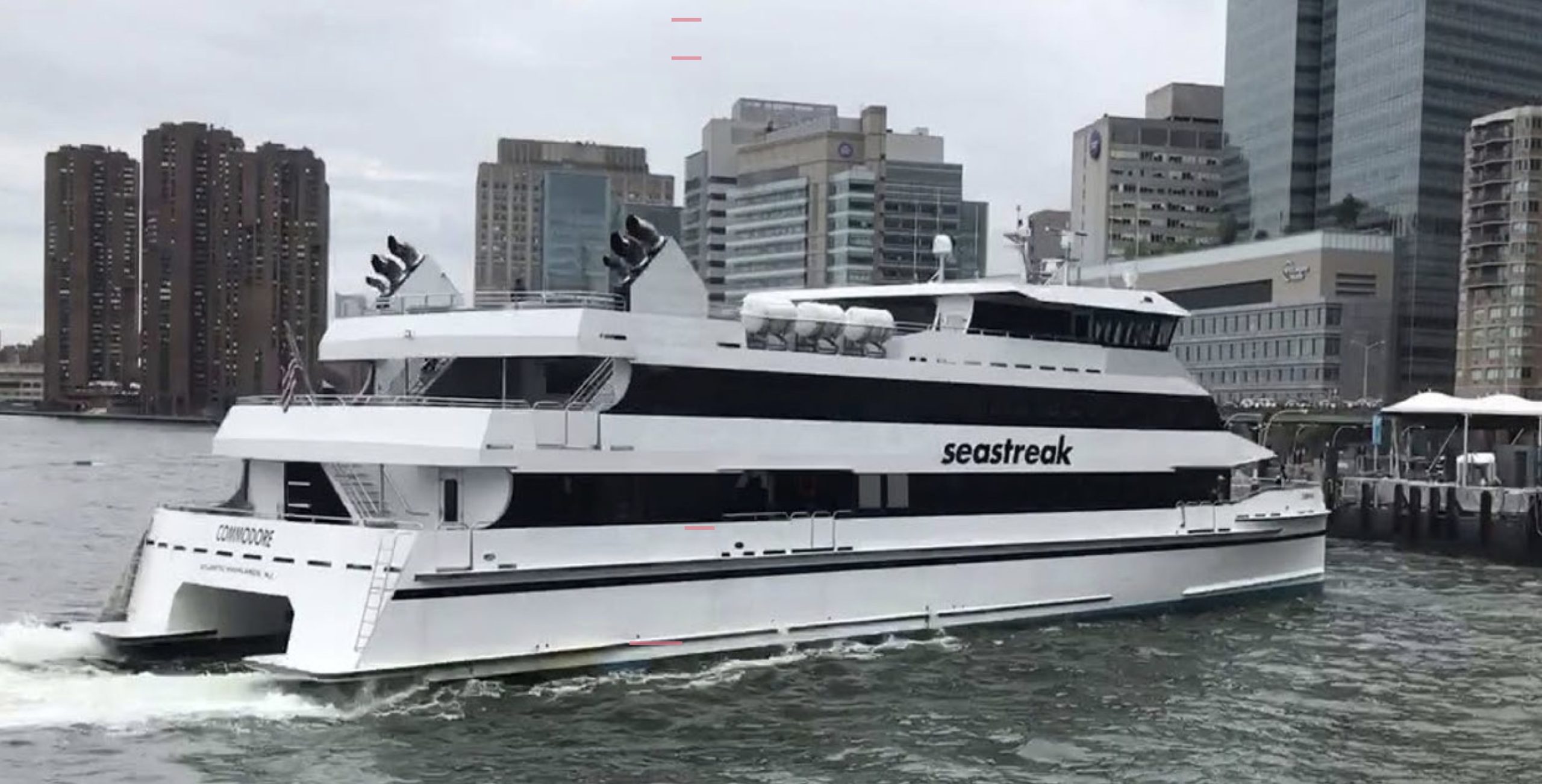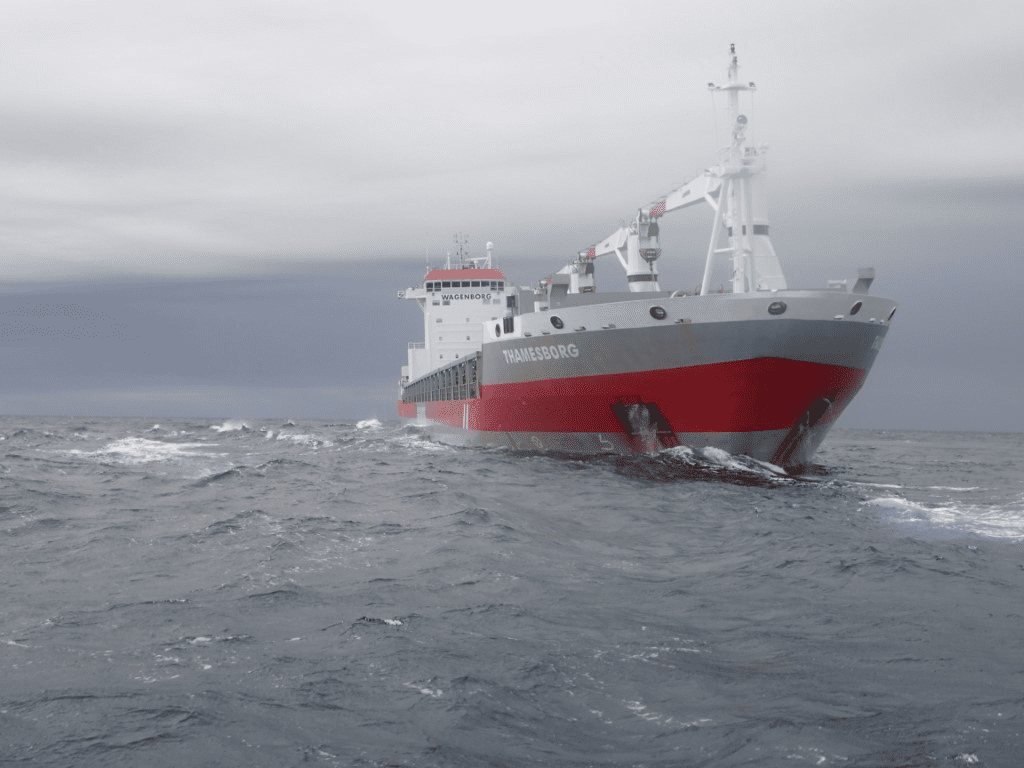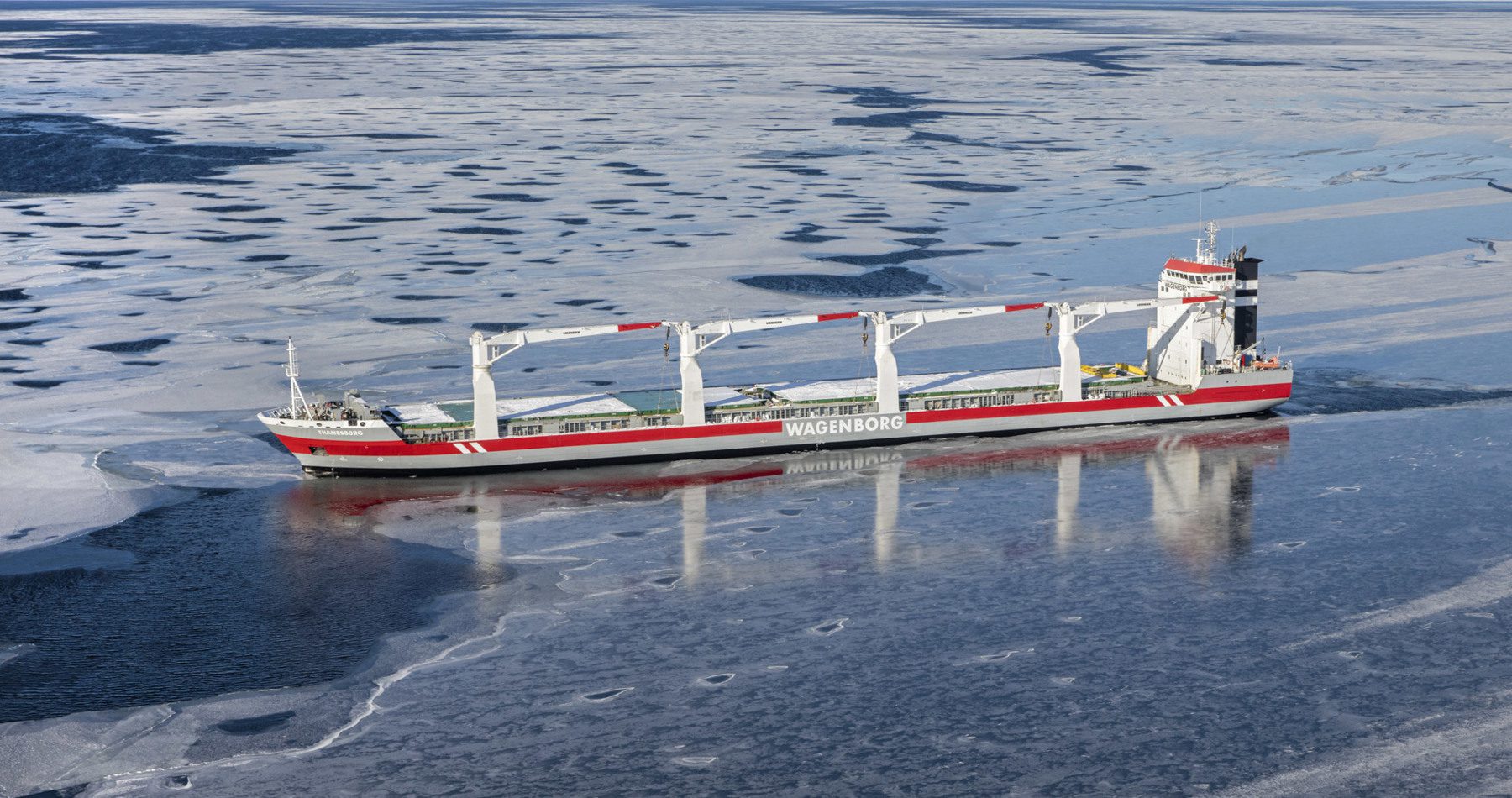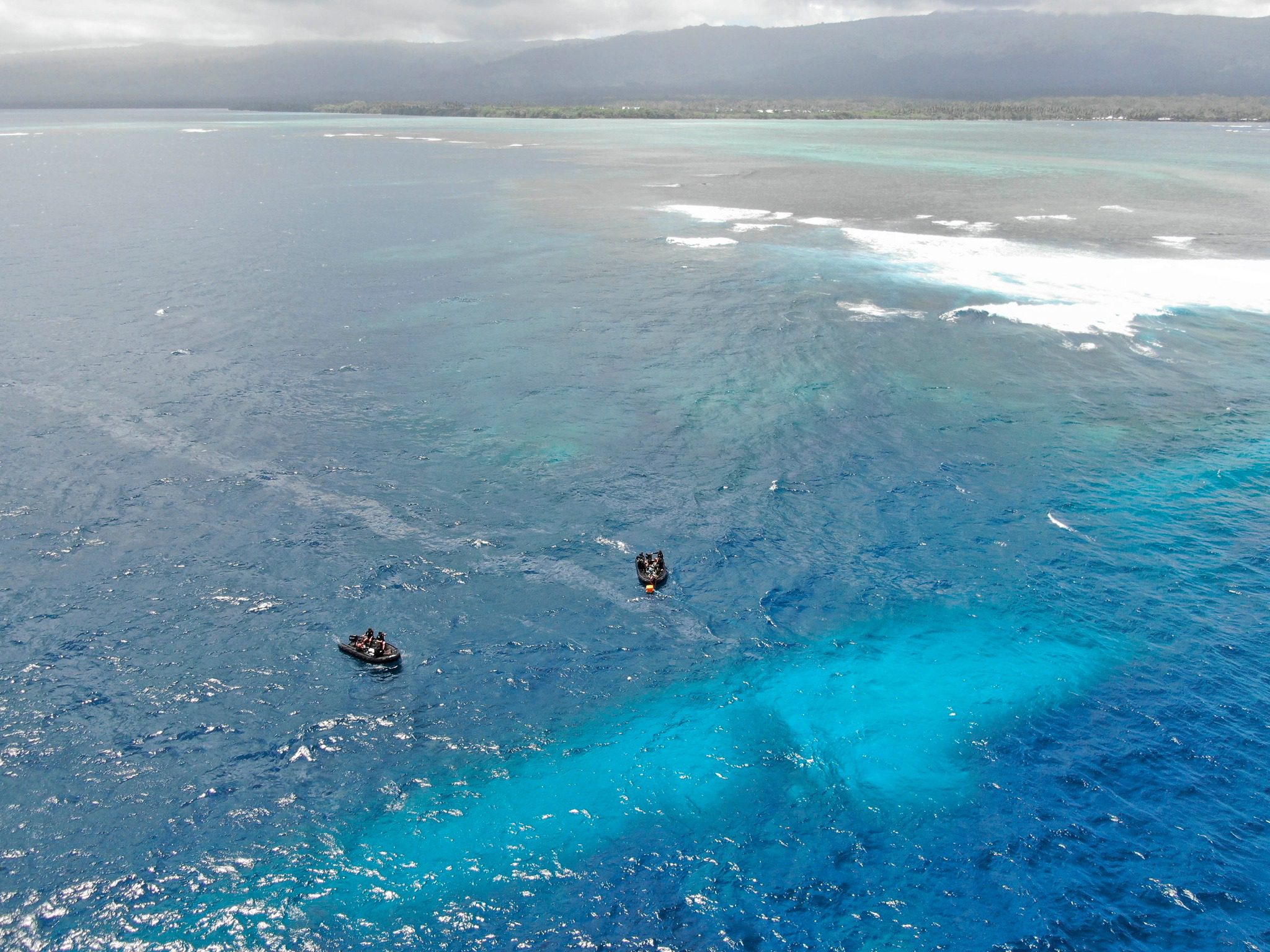A software flaw combined with the captain’s failure to use back-up controls led to the grounding of a passenger ferry last year in New York City, the National Transportation Safety Board said Tuesday.
The high-speed passenger ferry Commodore, owned and operated by Seastreak, was transiting northbound on the East River on June 5, 2021, when the catamaran lost primary steering and speed control to both of its port hull water jets and then grounded. One minor injury was reported among the seven crewmembers and 107 passengers on board. The grounding resulted in $2.5 million in damages to the vessel.
The ferry, providing commuter service between Manhattan and New Jersey, was operating its second trip of the day to a New York City Ferry Terminal from Sandy Hook, New Jersey. After passing under the Brooklyn Bridge, an alarm alerted indicating a control failure for the port water jets. The captain unsuccessfully attempted to reconnect the port jets several times via the primary control system.
The captain first attempted to slow the vessel, then he attempted to go full astern, but only the engines and water jets in the starboard hull responded. This resulted in the ferry turning to starboard and slowing. It crossed to the east side of the river and entered the relatively narrow opening to Bushwick Inlet. Less than two minutes after the alarm, the vessel grounded. The port hull was breached after contact with submerged pilings on the north shoreline of the Bushwick Inlet and seawater quickly entered the port engine room.
NTSB investigators found that the captain never tried to engage the back-up control, which could have been used to operate the vessel following the loss of primary control and more effective company training procedures for loss of propulsion or steering control would have included recognizing a control failure and then responding by using the back-up control or other alternatives.
Following the grounding, a service engineer determined the primary control system software was generating an unprecedented number of error messages, which caused the SD card for the display screen controlling the port water jets and engines to fail. This failure resulted in the loss of the display monitor and the loss of primary propulsion and steering control for the water jets and main engines in the port hull. A month after the grounding, the manufacturer issued a service letter to its customers mandating a software update that would correct the issue that caused the problem on the Commodore.
The NTSB said the probable cause of the grounding was the loss of the primary control system for the catamaran’s port water jets and propulsion engines due to a flaw in the system manufacturer’s software causing a memory card failure. Contributing to the casualty was the company’s lack of clear safety management system procedures for control system failure and ineffective oversight of crew training on loss of propulsion and steering control, resulting in the captain not identifying the nature of the loss of control and either engaging back-up control or using emergency engine shutdowns to stop the vessel.
“The loss of propulsion and steering control while transiting in channels or maneuvering near immediate hazards (grounding, traffic, objects), when response time is critical, demands crewmembers act quickly to mitigate potential casualties,” the report said. “Effective company training on the loss of propulsion and steering controls builds crew confidence and proficiency and improves a crew’s ability to respond during an actual emergency. Training should include requirements for the practical demonstration of loss of control procedures and use of emergency back-up systems. Vessel owners and operators should continuously evaluate training programs to ensure effectiveness of drills and implement changes to improve safety management system procedures.”
Marine Investigation Report 22/25 is available online.

 Join The Club
Join The Club











